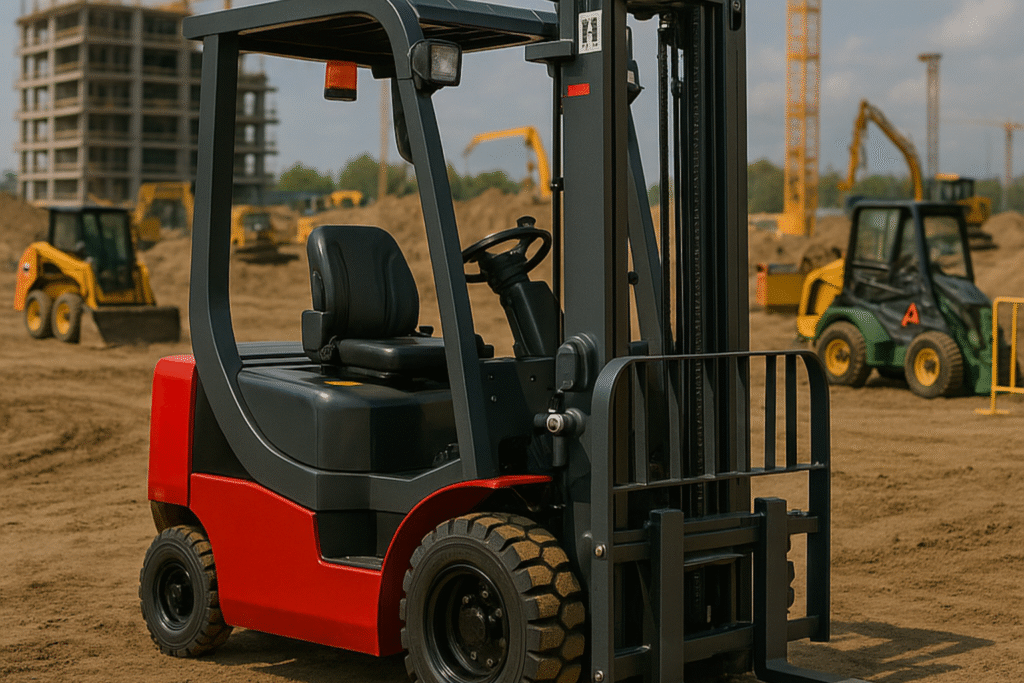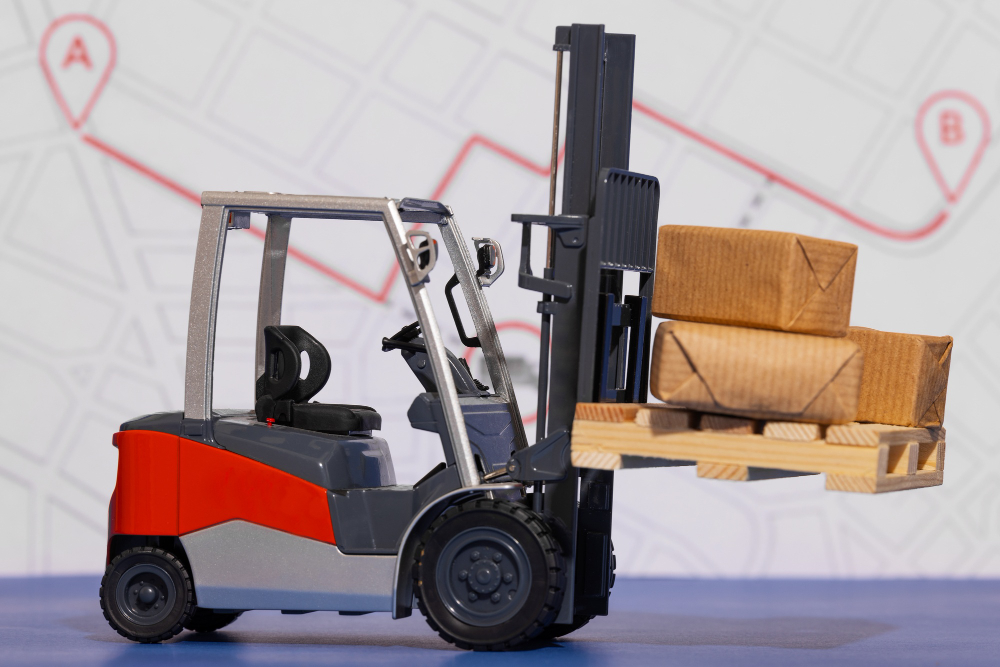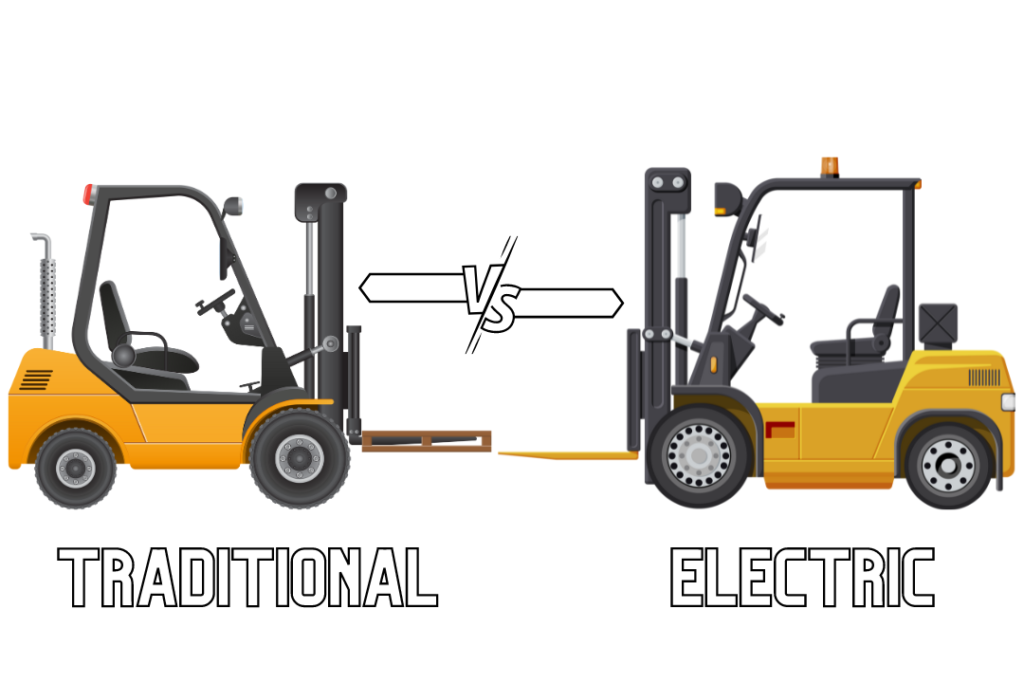Are you a person who is in charge of the electric forklift operations at your company? Comprehending the rules of electric forklift speed is very important to make sure that the operator and the pedestrians are not injured. Electric forklifts are safe at different speeds depending on the environment3-5 mph for indoor warehouses, 5-8 mph for outdoor operations, and 2-3 mph for loading docks.
There are no OSHA-prescribed speed limits; rather, the organization mandates controlled operation based on conditions. In this informative article, we are going to discuss 10 major safety guidelines that will be very useful for you to be able to:
- Set up speed management that is appropriate with different workplace zones
- Have a clear understanding of the factors that affect the safe operating speeds
- Be proficient in the OSHA-compliant speed management methods
- Avoid the usual speed-related accidents
Apart from your responsibility as a safety manager or a forklift operator, these practical guidelines will enable you to maintain the operational efficiency of your workplace while at the same time creating a safer working environment. Get ready to delve into the most important parts of the electric forklift speed regulations.
Key Takeaways:
- The speed at which it is safe for the forklifts to operate is different based on their location such as indoor warehouses (3-5 mph), outdoor operations (5-8 mph), and loading docks (2-3 mph)
- OSHA don’t name the actual speed limits and content with the controlled operation based on the environmental conditions and the workplace safety requirements
- The right way of speed management includes the necessity of providing different controls according to the zones, examining the surface of the place, the pedestrian traffic, and the visibility etc.
- Speed compliance and monitoring are the features of built-in speed control and the system of the operator’s profile that are necessary to avoid accidents.
- Continuing operator training and the existence of clearly defined speed limits are the two main components that allow the level of workplace safety standards to be sustained.
OSHA Guidelines for Electric Forklift Speed Control
A safe forklift operation is achieved by the knowledge and use of OSHA’s complete guidelines. OSHA does not specify exact speed limits, but they provide necessary frameworks for the maintenance of workplace safety.
- Regulatory Requirements
Forklifts that are powered and used in industry are regulated by OSHA’s standard 29 CFR 1910.178, which defines the main requirements covering the electric forklifts. The regulation stresses that operators must maintain speeds at which they can stop safely and at which they can control the vehicle. It means that the speed needs to be proportionate to the condition of the floor, visibility and the number of persons passing through the area.
OSHA requires that all forklift operators undergo training on speed regulation and safe operating techniques. The used program has to contain information on the influence of such outside factors as different loads, surfaces, and the environment that affects the speed that is safe for operation.
- Compliance and Enforcement
It is also crucial that measures for strict speed management be taken in order to have a safe workplace. OSHA suggests the following:
- Safety inspections and audits are conducted on a regular basis
- Speed policies are written and distinguished from area to area
- Warning signs and visual aids
- Systems for measuring speed
- Documented training records
- Regular refresher courses
Compliance with the established speed limits at work is what the safety officers must ensure through their routine checks. They must observe not only and also monitor the behavior of the employees, review incident reports, and change of plans in case of risk identification.
💡 Key Takeaway: It should be noted that OSHA does not need to set the limit for the electric forklifts’ speed in the workplace; it is crucial for the employee’s safety that there is a thorough training program, easy-to-understand policies, and intervention.
Recommended Speed Limits for Different Areas
- Main Road Operations
While driving electric forklifts on the main roads inside the facility, a good speed limit is necessary for safety. The usual speed limit ranges from 8-10 mph on a smooth and well-cleared path. Bad weather conditions, unclear visibility, and road traffic are the factors to be changed if necessary.
Even if the forklift is driving on a main road, the operator should still be cautious and reduce speed when turning around a corner, the intersection is blind, or there is more foot traffic. No matter the condition, safety should never be sacrificed for efficiency in the case of the speed limit.
- Indoor Facility Guidelines
Performance of the forklifts in the indoor area must be given special attention when imposing speed limits which are as a result of having closed spaces and regular interaction with pedestrians. Most of the manufacturing units adhere to an indoor speed limit of about 3-5 mph where the workers can operate the truck in a controlled mode so as to avoid accidents due to lack of time.
If a place has a lot of walk traffic or not so good visibility, the indoor speed limit is supposed to be 2-3 mph at most. This speed can be represented in other ways on different floors through the use of proper signage, and floor markings throughout the building.
- Regarding the Loading Dock
A big part of the dock is a constant source of work with many pull and push forces which the forklift operators must control from the trucks and manage the goods from the loading area down to the bay.
Because of the frequent activities in the loading docks hazardous, it is recommended that the speed in the dock be 2-3 mph.
By driving at a controlled speed, the risk of the truck shaking and the load being lost is reduced, and it also allows faster loading and unloading of the truck. Participating in and coming out of trucks being stable and slow is a good way to stop the load from moving and to keep its right dimension as well.
💡 Key Takeaway: Be aware that different operations sites need specific forklift speed limits – in the main roads, it can be up to 10 mph, indoors between 3-5 mph, and loading docks only 2-3 mph, so the driving of material can be safe and efficient across the different working areas.
Factors That Affect the Safety of the Travel
Speed Electric forklifts can run at certain speeds and the speed isn’t the same for every occasion. Different factors like the most suitable travel speed for an electric forklift change rather frequently, acquiring operators to continue making updates for successful safety at all times.
- Surface and Environmental Conditions
One of the big safety concerns is the extent to which the surface is prepared for a defined speed. If the floor is wet, greasy, or pitted it must be driven at a lower speed so that control can be achieved. When environmental influences such as rain, snow, and ice occur, outdoor operation loses the speed in real time.
Visibility is another crucial element. The lack of light, unclear corners, or crowded places make the operators operate at a slower pace. People who handle the forklift are the ones who have to think over their speed, as they clean and are quick to know the problem right when they go over it.
Ramps and slopes, on the other hand, are difficult for the operators of the vehicle. While moving up or down slopes, done at a slow speed, the driver avoids the truck’s turning over or falling off the road. Such a situation becomes very dangerous, especially when the load that is being carried can change the centre of gravity of the forklift tractor.
- Load Characteristics
The load weight, dimensions, and configuration are three factors that can determine the speed at which the forklift can move safely. More heavier loads mean that the machine should be moving at a slower pace since the brake path is longer and the vehicle has reduced maneuverability.
Similarly, if the object is too bulky or high and thereby affects the vision and stability of the driver, the cargo can only be operated more cautiously and also that slower. Stable loads of that sort are required to be carried at slower speeds to avoid possible displacement or even instantaneous fall. Height of the load determines the speed – the higher the load, the lower the speed the forklift should have in order to carry the load safely and stably.
Speed control must also be maintained, throughout the operation of the equipment, whenever it is necessary to carry on with some delicate or sensitive products. By referring to the care that is taken on the action, not only is the completion of the task achieved with no harm, but the safety regulations at your workplace are also followed, as it is clear that the characteristics of the load are the direct cause of speed change.
💡 Key Takeaway: In order to ensure safe control of forklifts and minimize accidents, the drivers should adjust the speed due to changes in the surface, environment, and load conditions continuously.
Speed Control Technologies and Solutions
- Speed Limiting Devices
Only the contemporary electric forklifts automatically have a speed regulator, which keeps the truck safe and sound. These smart gadgets not only control the speed of the forklift, but also make the work of the facility manager much easier as they only have to set the maximum speed limit that a working environment can have. Speed settings are one of the many features that can be tailored to the needs of a particular area, an operator, or a task.
Speed control is a good example of a safety measure that also has other functions. These systems are highly useful in that they can effectively minimize the wear and tear on the equipment, as well as the maintenance costs, and furthermore the efficiency of the operational process will be hugely improved. A lot of devices also have the possibility of setting acceleration limits to guarantee that the start or stop process is as smooth as possible and no sudden movements will destabilize loads.
- Impact Management Systems
Using impact-management techniques shows the progressive advancement of forklift safety. These innovative devices continually monitor impact occurrences and compile empirical evidence to decrease forklift hazards and promote safety operator training. Assistance systems may employ warning indicators to stop the car after a collision.
Comparing the new system to operator-controlled devices shows that it monitors drivers and decreases speed in unsafe locations or when drivers behave poorly without human involvement. Additionally, some systems may lessen speed on repeated hits until sufficient training is complete.
Fleet managers monitor and evaluate speeding instances using the program. The analyzed data is utilized to identify areas for improvement and create safety policies that address them.
💡 Key Takeaway: Modern speed control technologies impact management systems are two of the most effective devices when combined and used together as part of an overall safety solution. The technology makes it possible to program the controls and the information obtained through the data used for better safety at the workplace.
- Determining Safe Braking Distances
When using an electric forklift, the knowledge of safe stopping distances is very important to prevent accidents at your workplace.
Stopping safely is possible given you have the knowledge of the factors or conditions, such as the lift’s speed, load weight, and pavement condition, on which it depends.
Speed-Distance Relationship
It should be noted that the stopping distance of a forklift is proportional to a power of its speed (v). In other words, when a forklift’s top speed falls within the range of 8-12 mph, the operators should realize that conversely, if speed is doubled, the stopping distance becomes 4 times more.
As for a scenario of 4 mph where the forklift needs 20 feet to stop, the same would be the pace of 80 feet at 8 mph.
By using the following methodology, you can calculate the safe stopping distance:
- Stopping Distance = (Speed² ÷ 30) + (Speed × 1.5)
- Speed must be in miles per hour
- The result is in feet
- So, a forklift moving at 6 mph would need, for example, this:
- (36 ÷ 30) + (6 × 1.5) = 1.2 + 9 = 10.2 feet to stop
Keep in mind, such a simple calculation does not take into account:
- Load weight
- Floor conditions
- Tire condition
- Operator reaction time
- Gradient of the surface
If you cannot avoid traveling behind another vehicle on the road, do remember that maintaining a distance of at least three forklift lengths is necessary to be safe and secure in case of an emergency stop. (Just in the US)
💡 Key Takeaway: Safe stopping distance increases exponentially with speed, requiring careful calculation and consideration of multiple factors to maintain proper following distances and prevent accidents.
Final Share
Electric forklift speed control is essential for workplace safety and efficiency. Following these 10 steps may reduce accident risk while preserving OSHA compliance and operational efficiency. Forklift speeds are seldom linked to safety since most believe obeying these laws is enough.
Speed safety requires more than workplace layout, surface conditions, and operator training. Speed control, operator education, and regular monitoring are needed for effective speed management.
Compare your current forklift speed protocols to these 10 criteria, then add speed control technology, increase operator training, and routinely review safety. Speed management helps colleagues, families, and society and is the first step to success and output. Off we go! Make the workplace safe!
FAQs
How is the maximum speed of an electric forklift affected by terrain?
The speed and safety of a forklift are directly related to the terrain. Only on flat and smooth surfaces, at speeds of 5-7 mph can the forklift be driven safely and easily. On the other hand, the operation of a lift truck on rough and uneven surfaces, where operators are forced to be at 2-3 mph, provides a safe driving environment for the workers. Operatives should make sure to adjust their speed according to the terrain they are traveling on, as well as if there’s an incline, and for the presence of any other hazards they may encounter in order to remain in control.
What is the difference between indoor and outdoor speed limits for electric forklifts?
As a rule, indoor restrictions are from 3 to 5 mph because of the narrow spaces and crowd while outdoor ones may go up to 8 mph on clean, dedicated paths. Yet, in their work, according to the local regulations and the current weather and road conditions, the employers and workers can set even lower speeds.
Is there any connection of the weather to the speed regulations of electric forklifts?
There is definitely a big connection between the weather and safe speeds when operating speed becomes the key factor in the safety of the operator and his co-workers. The loss of an additional 50 percent of proposed speed limit by rain or snow is a typical example of the effect of weather on the safe speeds of electric forklifts. Drivers don’t operate at normal speeds during storms but rather keep it to a level that allows visibility and traction control.
How should forklift speed limiters be calibrated? How frequently?
It is recommended that limiter machines are reprogrammed at least twice a year or after big overhauls. If the process is carried out at the correct intervals it will guarantee the precision of the speed control system, the observance of safety regulations, and the compliance with the employer’s rules. Some newer systems even have automatic calibration as a feature.
What role does the weight of the load play in determining safe forklift speeds?
As a result of the added weight, the safe working speed can be directly affected. In order to maintain stability and control, heavier loads require reduced speeds. Typically, a decrease of 1-2 mph per 1,000 lbs above the standard load capacity will suffice as a safety measure to guarantee safe operation.
Do autonomous and operator-driven electric forklifts have different speed regulations?
Autonomous forklifts mostly execute programmed speeds that have been set based on the layout of the facility and safety regulations. Although operator-driven cars must remain within speed limits, autonomous lift trucks operate at a constant speed because of the algorithms and sensor data contribution.



